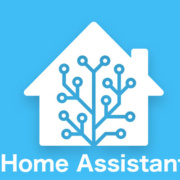What is Home Assistant?
Smart home technology has rapidly evolved, allowing homeowners and businesses to create intelligent, energy-efficient, and secure living spaces. At the center of this evolution is Home Assistant, one of the most popular open-source platforms for home automation. But what exactly is Home Assistant, and why is it so widely adopted in the smart home ecosystem?
Understanding Home Assistant
Home Assistant is an open-source home automation software that runs locally on devices like a Raspberry Pi, server, or embedded control panel. Unlike many cloud-based platforms, it focuses on local control and privacy, giving users complete ownership of their smart home data.
With Home Assistant, users can:
- Connect and control thousands of devices from different brands.
- Create customized automation rules (e.g., turning on lights when motion is detected).
- Access a unified dashboard through smartphones, tablets, or wall-mounted touch panels.
- Integrate with voice assistants like Alexa and Google Assistant.
Key Benefits of Home Assistant
- Open-Source Flexibility – Constantly updated by a global developer community.
- Local Processing – No dependency on external servers, ensuring reliability and privacy.
- Wide Device Compatibility – Works with Zigbee, Z-Wave, KNX, Wi-Fi, Bluetooth, and more.
- Customizable Automations – Advanced scripting and integrations for unique needs.
- Scalability – Suitable for small apartments or large smart buildings.
How Home Assistant Works with Smart Touch Control Panels
While Home Assistant can be accessed from mobile devices, many users prefer a dedicated smart touch control panel mounted on the wall. This creates a centralized hub for family members or employees to control smart devices without needing individual smartphones.
For example, Portworld’s Android-based smart home control panels (4″, 5.5″, 8″, 10″) can run Home Assistant directly, providing:
- Real-time dashboards for lighting, HVAC, curtains, and security systems.
- Seamless connectivity via Zigbee, KNX, Wi-Fi, PoE, and Bluetooth.
- OEM/ODM customization for brands and system integrators.
- Cross-platform compatibility with Android, Linux, and Debian for flexible integration.
Applications of Home Assistant
- Smart Homes – Automated lighting, climate control, and energy management.
- Hotels – Room automation for guests with personalized scenes.
- Offices – Centralized control of meeting room devices and environmental settings.
- Commercial Buildings – Security monitoring, access control, and energy optimization.
Home Assistant is more than just a smart home platform — it is a powerful, customizable ecosystem that puts users in control of their connected environments. When paired with Portworld’s smart touch control panels, it delivers a complete automation solution that is reliable, scalable, and tailored for modern living and business needs.
Portworld – Smart Technology. Smarter Support.



